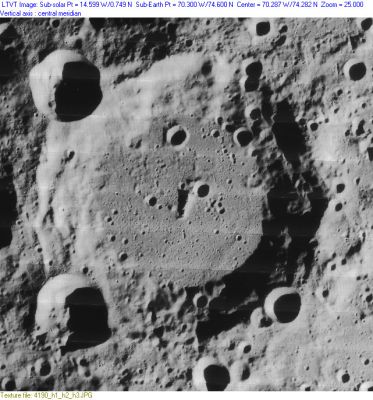Pascal
Contents
Pascal
(formerly Carpenter D)
|
Lat: 74.6°N, Long: 70.3°W, Diam: 115 km, Depth: 4.0 km, Rükl 3 |
Images
LPOD Photo Gallery Lunar Orbiter Images
Maps
(LAC zone 2A4)
Description
Description: Wikipedia
Additional Information
- Depth data from Kurt Fisher database
- Westfall, 2000: 4.63 km
- Cherrington, 1969: 3.29 km
- Measures on LRO QuickMap give depth about 4 km
- The central peak rises to 800 m at its northern end (LTVT measurement on LO-IV-190H). - Jim Mosher
- Measures on LRO QuickMap give central peak height about 700 m
Nomenclature
- Blaise Pascal (June 19, 1623–August 19, 1662) was a French mathematician, physicist, and religious philosopher. Pascal wrote powerfully in defense of the scientific method. He was a mathematician of the first order. Pascal helped create two major new areas of research. He wrote a significant treatise on the subject of projective geometry at the age of sixteen and corresponded with Pierre de Fermat from 1654 and later on probability theory, strongly influencing the development of modern economics and social science.
- Name given by Arthur and Whitaker in Rectified Lunar Atlas (1963) and approved by IAU in 1964 (Whitaker, 1999, p234).
- The valley north of Pascal is unofficially called Vallis Pascal by D.Caes. Since this valley (or rather: system of valleys) is observable from Earth (through common and powerful telescopes), it needs further investigation. See also the upper left corner of LAC 2 in the Clementine Atlas.
LPOD Articles
Bibliography
